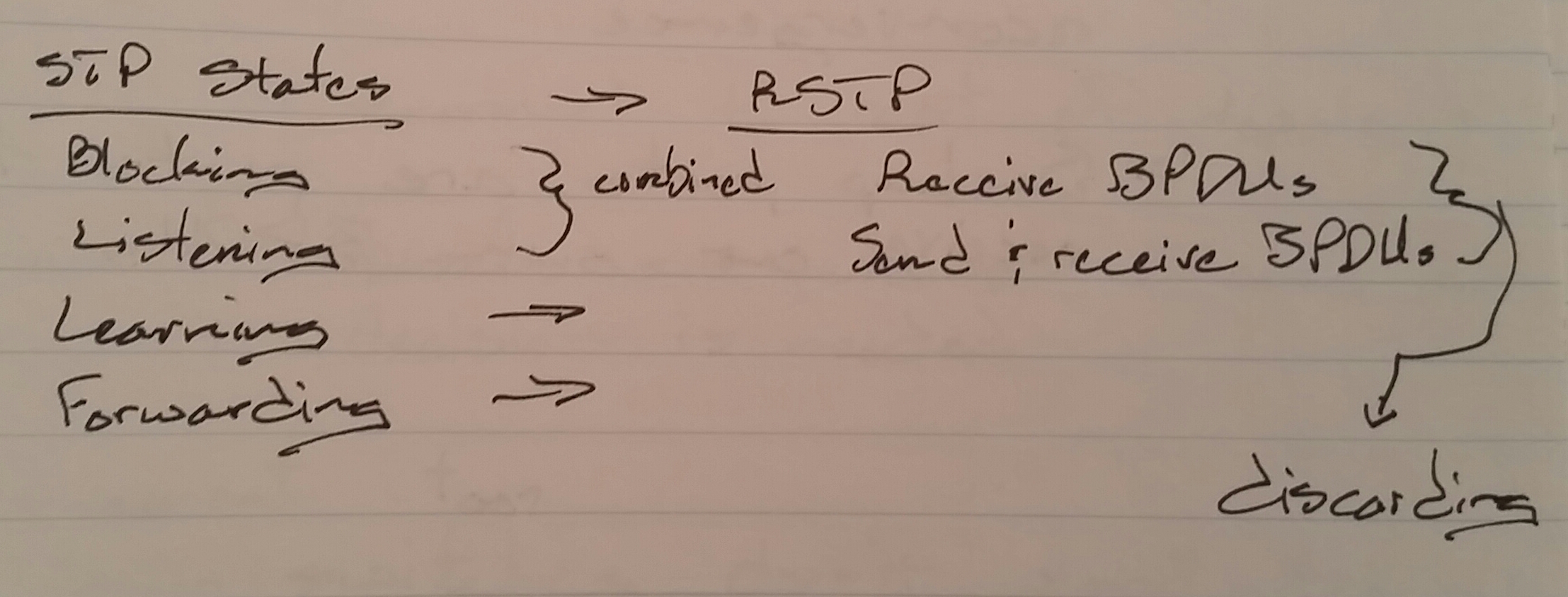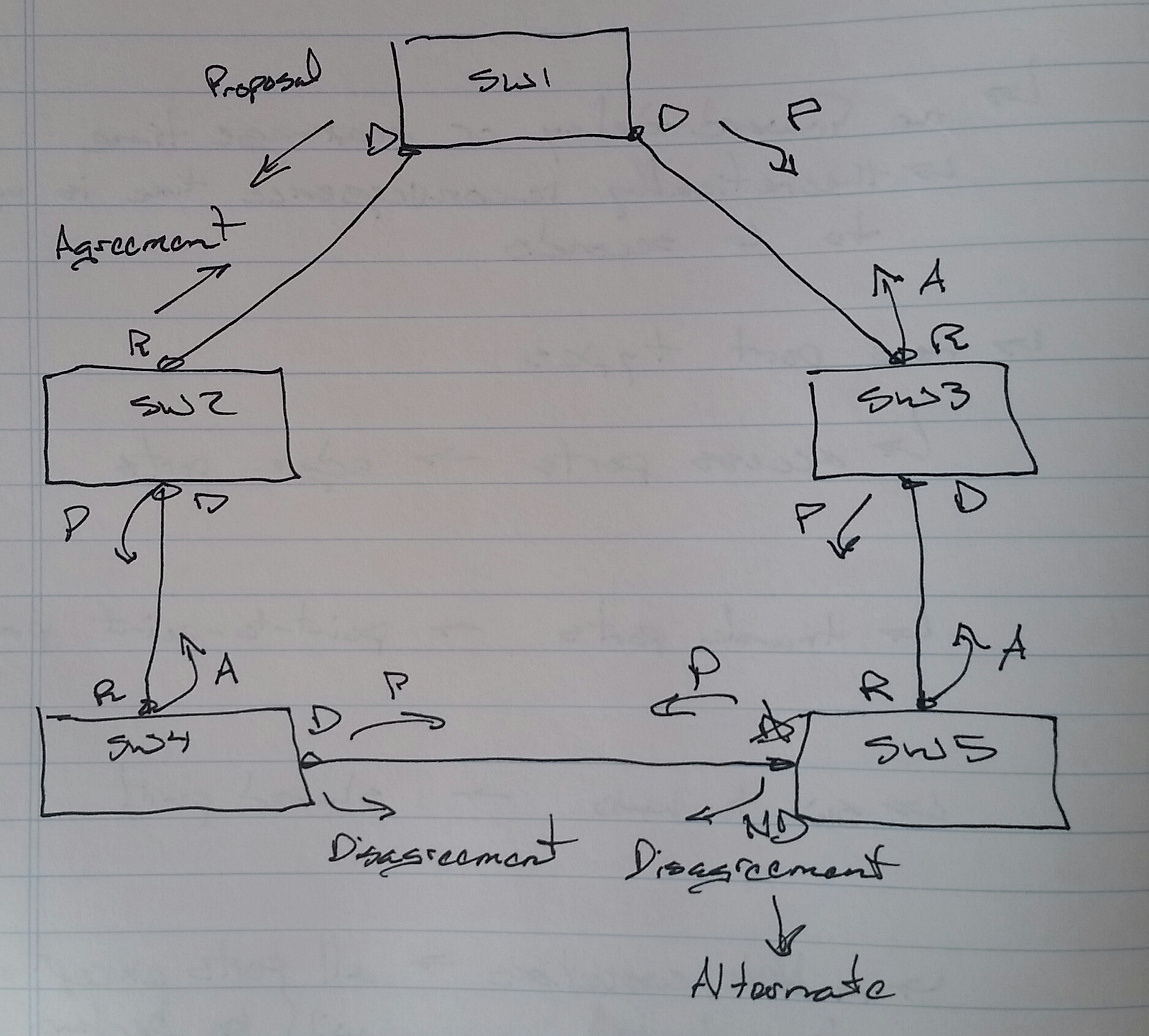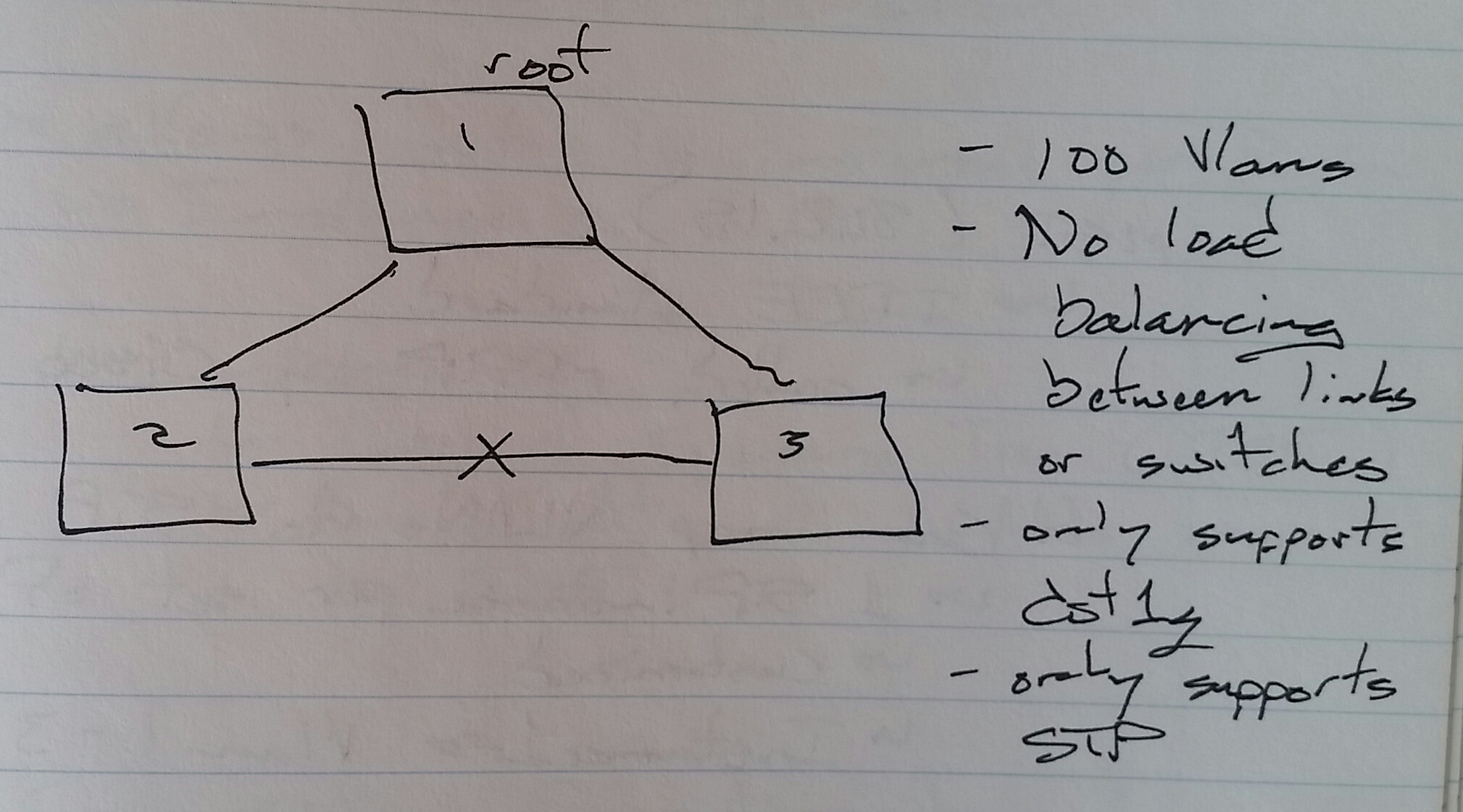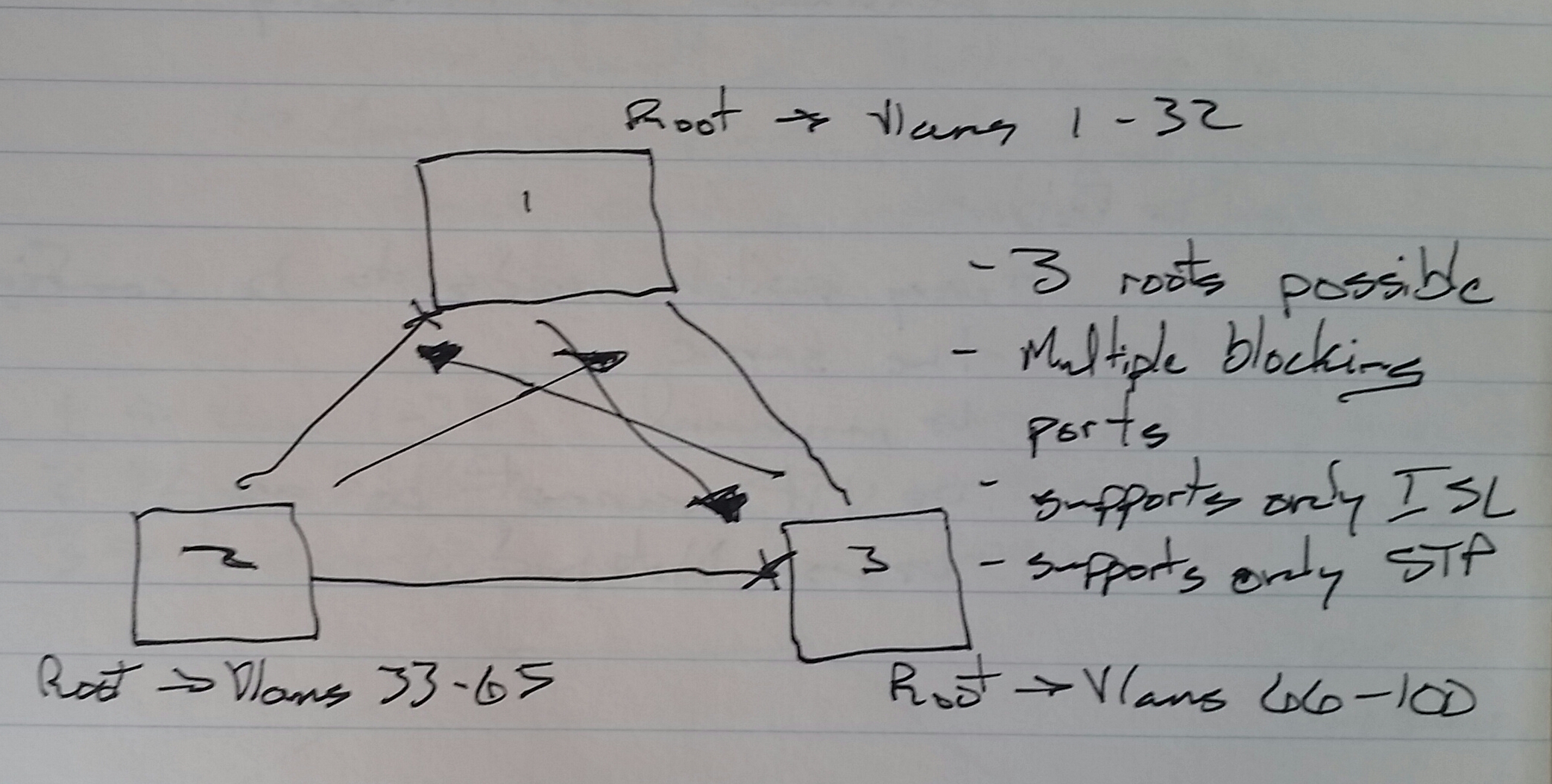Rapid STP (RSTP) Notes
Rapid STP (RSTP)
– 802.1W
– STP plus fast convergence features

– No forward-delay or max-age-time
-> Theoretical reconvergence time is up to 6 seconds
New Port Types
– Access ports —> Edge port
– Trunk port —> Point-to-Point port
– Switch to Hub —> Shared port
– Multiple connections to a Hub —> All ports except one will become Backup ports
-> Backup ports are ports that receive our own BPDUs

Failover does not have to wait for reconvergence

Proposal
– Please make this port a root port
– Receiving switch
-> Disconnect from rest of topology
-> Decide
-> Send agreement
-> Make port a root port
-> Reconnect to the rest of topology
– Disagreement
-> Both switches don’t want to change port to a root port
– The root bridge never sends an agreement
Proposal and Agreement Procedure
1. In RSTP once the root bridge is elected, it sends a Proposal message out all designated ports
2. The Proposal is a request to make the receiving port a root port
3. Whenever a switch receives a Proposal, it disconnects itself from the rest of the topology to decide to agree or disagree
4. If agree, an Agreement message is sent back and the sending port becomes a root port
5. Once the root port is decided, the switch sends Proposal messages further out potential designated ports
Configuring RSTP
SW1(config)# spanning-tree mode rapid-pvst
Convergence Methods
– Only two
-> STP
-> Slower
-> RSTP
-> Faster
-> Used by MST for convergence
Topological Design
– STP to VLAN mapping
-> Common Spanning Tree (CST)
-> Per-VLAN Spanning Tree (PVST)
-> Per-VLAN Spanning Tree + (PVST+)
-> Multiple Spanning Tree (MST)
Common Spanning Tree (CST)
– One STP instance for all VLANs
– Only one root election
– Limited to 100 VLANs
– No load balancing between links or switches
– Only supports dot1q
– Only supports STP for convergence

Per-VLAN Spanning Tree (PVST)
– One STP instance per VLAN
– 100 VLANs means
-> 100 STP instances
-> 100 root bridges
-> 100 BPDUs
– Only supports ISL
– Only supports STP for convergence

Per-VLAN Spanning Tree + (PVST+)
– Supports both ISL and dot1q
– Supports both STP and RSTP for convergence

